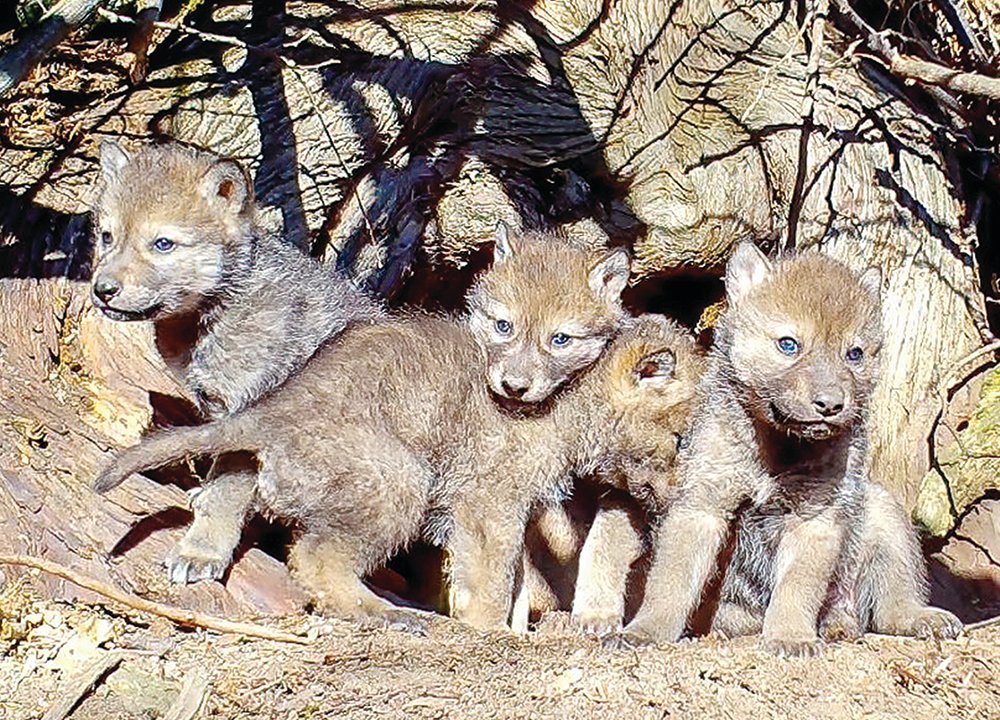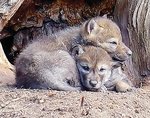Support the Timberjay by making a donation.
Wolf secrets revealed by popular videos
Project fundraiser would triple trail cam coverage of packs
REGIONAL- There was a time when twins and triplets would be a big surprise for expectant parents, but sonograms and technology changed that forever.Now, technology is doing the same for what we know …
This item is available in full to subscribers.
Attention subscribers
To continue reading, you will need to either log in to your subscriber account, or purchase a new subscription.
If you are a current print subscriber, you can set up a free website account and connect your subscription to it by clicking here.
If you are a digital subscriber with an active, online-only subscription then you already have an account here. Just reset your password if you've not yet logged in to your account on this new site.
Otherwise, click here to view your options for subscribing.
Please log in to continue |
Wolf secrets revealed by popular videos
Project fundraiser would triple trail cam coverage of packs
REGIONAL- There was a time when twins and triplets would be a big surprise for expectant parents, but sonograms and technology changed that forever.
Now, technology is doing the same for what we know about wolves in the wild, as high-quality trail cameras are giving researchers with the Voyageurs Wolf Project surprising and captivating new insights into their summertime lives in the boreal forest.
“We just shared a post this morning online which was run into a den a couple of weeks ago,” project lead Tom Gable said last Friday. “The den was so tight and narrow that we couldn’t see anything. We saw two pups, but we couldn’t see the back of the den. So, we put up our cameras, and lo and behold, five pups were in there. We never would’ve known that because you can’t sit by the den and wait for them to come out; they’re not going to come out while you’re there.”
Determining wolf pup survival rates is just one goal of the project, and across the dozen or so packs the project monitors, undercounting pups by half or more would seriously affect their conclusions.
“There’s a lot of dens that have these little nooks and crannies and these little pups can sneak into them and you’ll never see them in there,” Gable said. “Those cameras give us a lot of confidence that our estimate is sound.”
The University of Minnesota-sponsored project, which grew out of a collaboration between Voyageurs National Park and Northern Michigan University, has already made great strides in its studies by tracking wolves with GPS collars, but translating wolf movements into descriptions of actual wolf behavior often involves educated speculation. Trail cams, Gable said, can remove the guesswork.
“Wolves catching fish, we documented that from following our GPS-collared wolves around, but it was hard to get our paper published on that one because we didn’t have direct observation of it,” Gable said. “The paper was rejected the first time because the reviewers said you don’t know they’re actually catching fish here; it could be something else. And then we put out a trail camera and got it. If we had had that footage to go with it there would have been no question that they were catching fish, because we’ve got the video evidence to show that.”
That first video posted to the project’s growing YouTube site has garnered about 2,600 views, and a subsequent wolf fishing video picked up 6,700 more. There are currently about 75 videos on the site, with typical viewership ranging between 1,000 and 10,000. The most popular video, the first-ever footage from a wild wolf wearing a collar camera, has had over one million views in the month it’s been online.
Coupled with additional social media presence on Facebook, Instagram, and Twitter, videos produced with trail cam footage have been viewed more than 28 million times and have brought international attention to the project, Gable said.
“You’ve got people following the project from South Africa, China, Thailand, Australia, South America, all sorts of European countries,” he said. “It’s been really awesome because it allows us to share our work and the wonder of northern Minnesota with a really huge audience. I think we have over 130,000 people following us across the various platforms, and that continues to increase substantially every day.”
Trail cam footage allows both researchers and followers to engage in a new way with the stories of wolves over short and long periods of time. When researchers put a GPS collar on a wolf, they also give it an ear tag. Collars detach and drop off automatically after a year or so, Gable said, but the quality of trail cams has improved to the point that researchers can often read the tag numbers from the video or use unique markings to identify individuals.
“For example, we’ve learned that a wolf that was tagged as a yearling in 2015 is now the breeding animal in this pack in 2021,” Gable said. “Now we’re able to maintain and figure out when new packs form, we can determine when breeding animals die, and when a new pack comes in and takes over that territory.”
Biologists flying in airplanes have been fortunate in the past when they’ve been able to observe a wolf pack twice during the winter, as one pack’s territory can range up to 70 square miles. Trail cams accomplish the task far better.
“You don’t have to do any flying, you don’t even need to have a collar on an animal in the pack,” Gable said. “You can just put your cameras in that territory, and it’s not uncommon for us to get ten, 12, 15 observations of the same pack.”
To expand the trail cam component of the research even more, the Voyageurs Wolf Project has launched an ambitious campaign on GoFundMe to raise $36,000 for 120 Browning Spec Ops trail camera packages. As of Tuesday, they were about three-fourths of the way there with over $28,000 in donations.
If successful, the campaign will more than triple the number currently deployed, expanding the range covered and facilitating expanded research in wolf litter size and pup survival, pack and overall population estimates, unique behaviors like fishing and eating blueberries, and hunting behaviors.
“I’ve been telling people that if you really enjoy the content we share, the more cameras we have out just increases our ability to capture really special moments,” Gable said. “It’s not only helping our work, but it also is benefiting our outreach and the people who donate directly because we’re going to share all of our cool stuff.”
Donations to the fundraiser can be made online at https://gofund.me/8c460fbc. You can learn more about the Voyageurs Wolf Project by visiting their Facebook page or going to their website at www.voyageurswolfproject.org.









